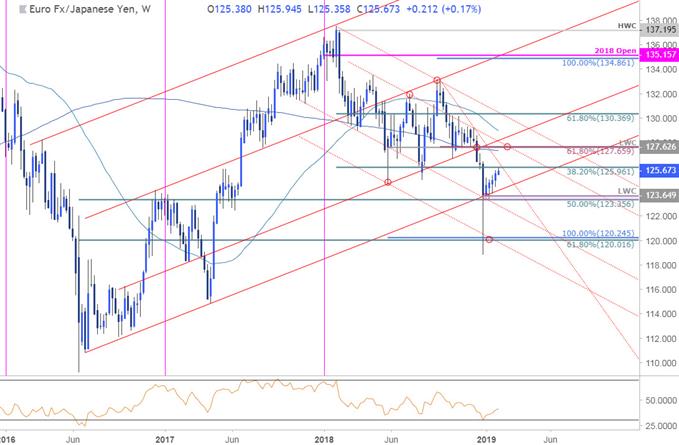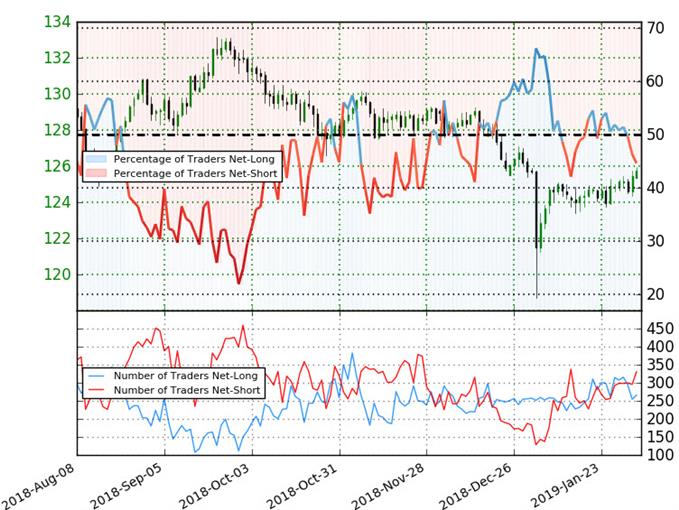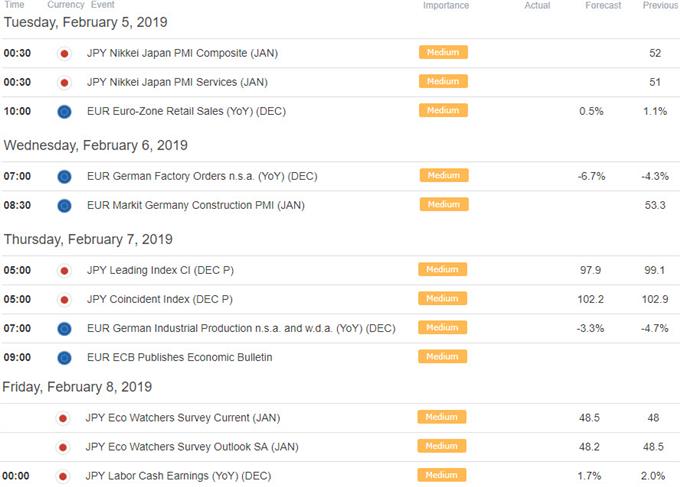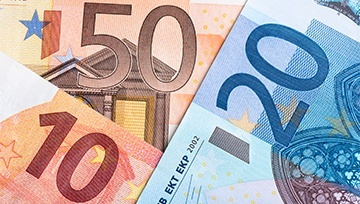- Updated weekly technicals on EUR/JPY- Focus heading into February is on break of 123.65-126 range
- Check out our 2019 projections in our Free DailyFX EUR Trading Forecasts
- Join Michael for Live Weekly Strategy Webinars on Mondays at 12:30GMT
In this series we scale-back and look at the broader technical picture to gain a bit more perspective on where we are in trend. Euro is up nearly 0.8% against the Japanese Yen since the start of the month with the recent price recovery now testing initial Fibonacci resistance. Here are the key targets & invalidation levels that matter on the EUR/JPY weekly chart.
New to Forex Trading? Get started with this Free Beginners Guide
EUR/JPY Weekly Price Chart

Notes: EUR/JPY rebounded off a critical support confluence early in the year at 123.36 where the 50% retracement of the 2016 advance converges on basic trendline support- (note that price respected this threshold on a weekly close basis). The subsequent recovery is now in its fifth consecutive week with price approaching initial resistance at the 38.2% retracement of the 2018 decline at 125.96.
A breach / weekly close above this threshold is needed to keep the immediate advance viable with such a scenario targeting more significant resistance at 127.4/66 – a region defined by the May low-week close, the 61.8% retracement of the September decline, and the 200-week moving average. Key support rests at 123.36/64–look for a break of this key range for guidance heading into February trade with a topside breach ultimately favored.
For a complete breakdown of Michael’s trading strategy, review his Foundations of Technical Analysis series on Building a Trading Strategy
Bottom line: The immediate EUR/JPY recovery may be vulnerable near-term sub-126 but the broader outlook remains constructive while above 123.36. From a trading standpoint, we’ll favor fading weakness while above this support zone targeting a breach of this range. Be on the lookout for downside exhaustion on a pullback to offer more favorable long-entries. I’ll publish an updated EUR.JPY Price Outlook once we get further clarity on the near-term trading levels.
Even the most seasoned traders need a reminder every now and then- Avoid these Mistakes in your trading
EUR/JPY Trader Sentiment

- A summary of IG Client Sentiment shows traders are net-short EUR/JPY - the ratio stands at -1.24 (44.6% of traders are long) – bullish reading
- The percentage of traders net-long is now its lowest since January 15th
- Long positions are 1.1% lower than yesterday and 11.6% lower from last week
- Short positions are 5.8% higher than yesterday and 12.6% higher from last week
- We typically take a contrarian view to crowd sentiment, and the fact traders are net-short suggests EUR/JPY prices may continue to rise. Traders are further net-short than yesterday & last week, and the combination of current positioning and recent changes gives us a stronger EUR/JPY-bullish contrarian trading bias from a sentiment standpoint
See how shifts in EUR/JPY retail positioning are impacting trend- Learn more about sentiment!
---
Relevant EUR/JPY Data Releases

Economic Calendar - latest economic developments and upcoming event risk. Learn more about how we Trade the News in our Free Guide !
Previous Weekly Technical Charts
- Gold (XAU/USD)
- Canadian Dollar (USD/CAD)
- New Zealand Dollar (NZD/USD)
- Crude Oil (WTI)
- British Pound (GBP/USD)
- US Dollar Index (DXY)
- Euro (EUR/USD)
Learn how to Trade with Confidence in our Free Trading Guide
--- Written by Michael Boutros, Technical Currency Strategist with DailyFX
Follow Michael on Twitter @MBForex






